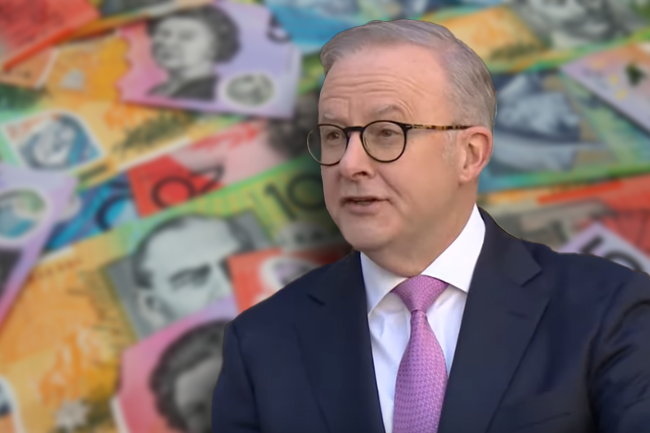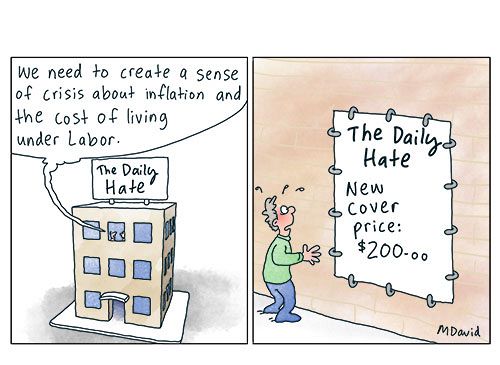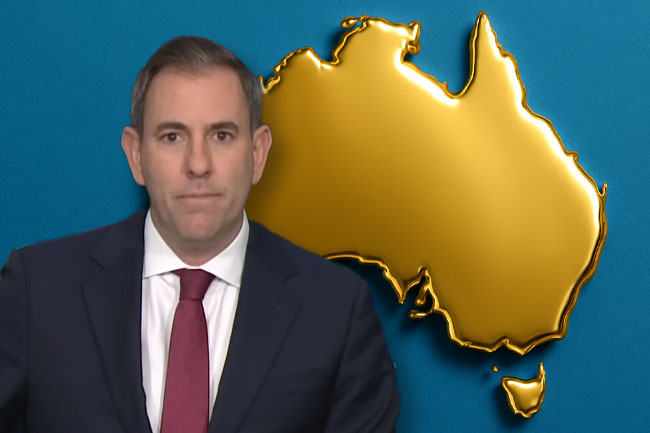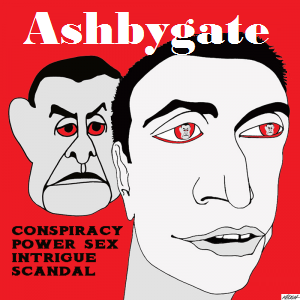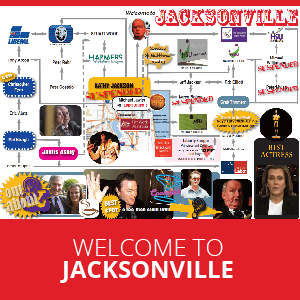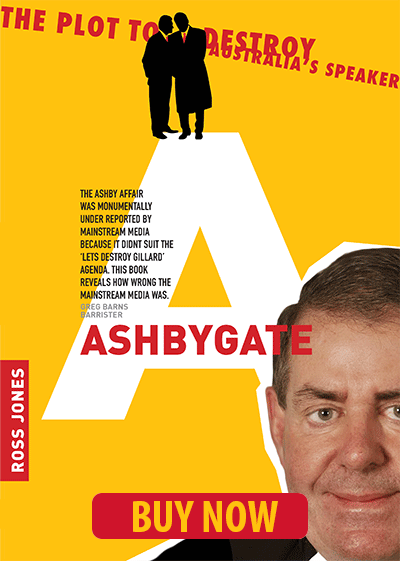Claims from Australia’s welfare peak body appear at odds with reality, as Alan Austin reports.
IMAGINE THE Albanese Government managed somehow to double the incomes of all Australians while keeping prices, rents and power bills about the same. How would that impact poverty?
Obviously, every family could enjoy three excellent meals a day and luxuries every week. They could easily meet rent or mortgage payments and probably upgrade. It would end almost all financial stress.
Would the welfare lobby and academics now calling for greater poverty alleviation congratulate the Government for such progress?
No, they wouldn’t. Some would complain that poverty is still worsening.
Why poverty can never be reduced
The Australian Council of Social Services (ACOSS) and the University of NSW (UNSW) use two measures of poverty:
‘We use two poverty lines — 50% of median income and 60% of median income, whereby people living below these incomes are regarded as living in poverty.’
In our scenario above, while all Australians suddenly have vastly higher living standards and want for nothing, half the population would still be below the median income – now doubled – and the same proportion would be at 50% below. Hence, the same percentage, by definition, would remain in poverty.
Albo has made a big difference
In fact, the Albanese Government has substantially reduced privation across Australia, although it hasn’t quite doubled everyone’s spending money. Not yet.
The weekly minimum wage is up from $772.60 before the 2022 Election to $948.00 today. That’s a 22.7% rise, the strongest on record. Wages overall have risen more than prices for the last seven quarters. The jobless rate has been below 4.4% for a record 44 months.
The fortnightly allowance for single youth living away from home is up 25% to $663.30. Adult unemployment benefits and the age pension have both increased more than inflation.
Household wealth is 31.8% higher than it was four years ago. Australia’s median wealth is now the world’s second-highest. Gross disposable income hit a new record high in the June quarter. The percentage of all national income going to workers is up from a miserable 49.2% in June 2022 to 54% in June this year. This just keeps on rising, showing inequality dramatically reducing. See chart below.
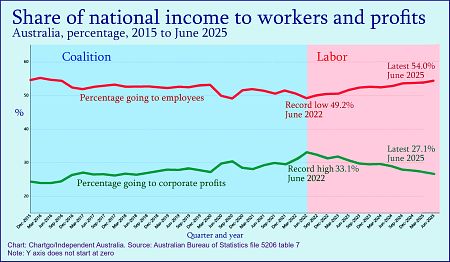
Indicators all confirm progress
One of Australia’s most timely measures of hardship is the monthly count of calls to the National Debt Helpline (NDH), a government-funded emergency call centre. The NDH reports calls received each month on the first day of the following month. That is impressive real-time reporting.
Debt-related calls in August fell again to 12,115. Except for April this year, that’s the lowest since November last year.
Calls for help over the last five months have averaged 12,663. That is lower than for the same period last year, and way below the 14,525 in 2018 and 14,029 in 2019.
This NDH evidence is bolstered by the Productivity Commission’s findings in January that both poverty and homelessness are easing as public housing, rent assistance and the NDIS are expanding. Other indicators include all-time high retail sales to GDP, booming consumption of luxuries and increasing consumption expenditure.
Clearly, some Australians are still struggling and poverty hasn’t been eliminated. But the trend is in the right direction.
Response of the welfare sector
So is the peak body lobbying on behalf of the poor happy with Albo’s progress? Absolutely not.
In a scathing opinion piece in The Guardian last month, the chief executive of ACOSS wrote:
‘We must address Australia’s growing inequality, which is one of the major causes of weak productivity and declining living standards in Australia.’
She claimed that ‘one in eight of us still lives in poverty, including one in six children’ and was quite explicit that ‘wealth inequality continues to grow’.
She asserted, further, that ‘more than 600,000 people have been living on $395 per week for more than a year’.
Wow! That’s terrible.
No evidence was offered for these assertions, but we can track the source via the ACOSS website to ‘Poverty In Australia 2022, a Snapshot’, an ACOSS/UNSW Sydney poverty and inequality partnership report.
This document proved:
‘More than one in eight people and one in six children live below the poverty line...’
Disturbingly, we find this regarding the time period:
‘This report provides a brief overview of levels of poverty – overall and among adults and children – following the recent release of ABS data on household incomes in 2019-20. It examines trends in poverty since 1999, and through each quarter of 2019-20.’
So, as IA reported in a similar critique of ACOSS last December, the data underpinning its condemnations of Labor in 2025 were collected during the Coalition period more than five years ago.
Yes, the situation certainly was appalling through the Morrison years, as IA frequently reported. But those days are now long gone.
As to the 600,000 people living for more than a year on $395 per week, which is the current jobless payment, that seems unlikely. The latest ABS jobs data shows 649,000 workers unemployed, but only 139,800 jobless for a year or more. That number, incidentally, was well above 200,000 for the first six months of 2021 under the previous incompetent regime.
Response from ACOSS
IA contacted ACOSS, asking this:
Many datasets clearly show inequality was growing and living standards were declining under the previous Coalition Government.
Do any datasets show this was still the case in 2024 and is the situation now?
What data shows that “more than 600,000 people have been living on $395 per week for more than a year”?
We asked nicely twice, but received no reply. Why not?
Everyone understands that “Ain’t it awful!” stories sell newspapers, and may energise support for worthy causes. But telling the truth is also important.
Alan Austin is an Independent Australia columnist and freelance journalist. You can follow him on Twitter @alanaustin001.
 This work is licensed under a Creative Commons Attribution-NonCommercial-NoDerivs 3.0 Australia License
This work is licensed under a Creative Commons Attribution-NonCommercial-NoDerivs 3.0 Australia License
Support independent journalism Subscribe to IA.

Related Articles
- Anthony Albanese’s Palestine declaration — his Wave Hill moment
- The cost of living crisis is over — so why aren’t we all celebrating?
- Parliamentary disability discourse reopening old wounds
- CARTOONS: Albo juggles the household Bills
- Albanese's move to protect kids from social media 'problematic'


